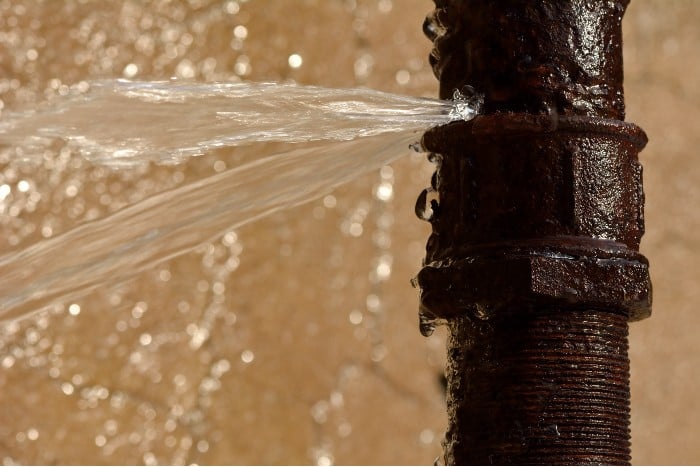Pinpoint Why Water Seepage in Your House
Pinpoint Why Water Seepage in Your House
Blog Article
The article in the next paragraphs about How Fast Water Damage Can Ruin Your Home is rather compelling. Give it a try and make your own personal assumptions.

Leaks not just cause waste of water however can also cause unnecessary damage to your house and also promote undesirable organic development. Unfortunately, water leaks may go unnoticed considering that most of the pipework in our home is concealed. By understanding and also looking for daily scenarios that cause leaks, you can shield your home from future leaks and also unnecessary damage. Today, we will certainly consider six leak causes that may be creating your pipelines to trickle.
Intruding origins
The majority of water leakages start outside the house as opposed to inside it. If you notice an abrupt decline in water pressure, state in your tap, require time to go out and also examine your lawn. You could see wet patches or sinkholes in your backyard, which could suggest that tree origins are attacking water lines creating water to seep out. You can have your plumber check for invasion, particularly if you have trees or shrubs near your building.
Corroded water systems
As time passes by, your plumbing system ages and deterioration such as corrosion might begin eating away the pipes. This may be the cause of staining or warping on your water pipes. This calls for an assessment with your plumber quickly. If our plumbing system is old, take into consideration replacing the pipes since they go to a greater danger of corrosion than the newer models.
Faulty Pipe Joints
The factor at which your pipelines link is often the weakest web link in the waterline. Pipe joints can deteriorate with time, resulting in water leaks. Regrettably, most of pipe joints are not easily noticeable. If you have loud pipelines that make ticking or banging noises, particularly when the hot water is turned on, your pipe joints are possibly under a lot of stress. It is a good idea to have your plumber examine your system once a year.
Instant temperature adjustments.
Extreme temperature modifications in our pipelines can trigger them to broaden and contract suddenly. This expansion and contraction might trigger splits in the pipes, particularly if the temperature level are below freezing. If you maintained an eye on just how your plumbing functions, it would be best. The existence of the formerly stated situations often suggests a high risk.
Poor Water Connectors
At times, a leak can be caused by loose hoses and pipelines that provide your devices. In case of a water connections leakage, you might observe water running straight from the supply line or pools around your home appliances.
Clogged Drains
Blocked drains could be bothersome and inconveniencing, yet they can occasionally wind up creating an overflow leading to break pipes. Keep eliminating any type of products that might drop your drains that might clog them to prevent such hassles.
All the above are reasons for leaks however not all water leakages arise from plumbing leaks; some leakages could come from roof leakages. All leaks need to be fixed instantly to avoid water damage.
Leakages not only trigger waste of water however can likewise create unnecessary damage to your residence as well as advertise unwanted natural development. By recognizing and looking for daily scenarios that create leaks, you can safeguard your house from future leaks and also unneeded damage. Today, we will certainly look at six leak triggers that may be creating your pipelines to drip.
At times, a leakage can be triggered by loose hose pipes and pipes that supply your devices. In case of a water connections leakage, you might see water running directly from the supply line or puddles around your appliances.
How To Check For Water Leak In Your Home
How To Check for Leaks
The average household's leaks can account for nearly 10,000 gallons of water wasted every year and ten percent of homes have leaks that waste 90 gallons or more per day. Common types of leaks found in the home are worn toilet flappers, dripping faucets, and other leaking valves. These types of leaks are often easy to fix, requiring only a few tools and hardware that can pay for themselves in water savings. Fixing easily corrected household water leaks can save homeowners about 10 percent on their water bills.
To check for leaks in your home, you first need to determine whether you're wasting water and then identify the source of the leak. Here are some tips for finding leaks:
Take a look at your water usage during a colder month, such as January or February. If a family of four exceeds 12,000 gallons per month, there are serious leaks.
Check your water meter before and after a two-hour period when no water is being used. If the meter changes at all, you probably have a leak.
Identify toilet leaks by placing a drop of food coloring in the toilet tank. If any color shows up in the bowl after 10 minutes, you have a leak. (Be sure to flush immediately after the experiment to avoid staining the tank.)
Examine faucet gaskets and pipe fittings for any water on the outside of the pipe to check for surface leaks.
Undetected water leaks can happen without the home or business owner even realizing. If you suspect a water leak, but not able to find the source. It is time to contact a professional water leak detection service, The Leak Doctor.
How To Find a Water Leak In Your Home
https://www.leakdoctor.com/blog/How-To-Check-For-Water-Leak-In-Your-Home_AE197.html

We were made aware of that article about How to detect water leaks in your home from an associate on our other web property. Don't hesitate to take the opportunity to share this blog if you appreciated it. Thanks a bunch for your time. Don't hesitate to check our blog back soon.
Emergency plumber? One call away. Report this page